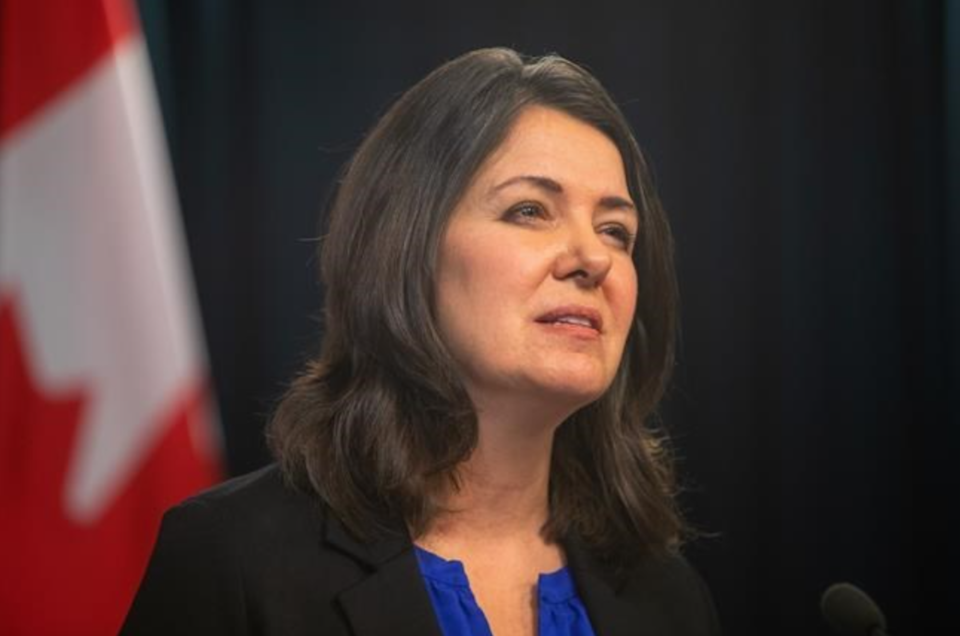International trade experts say U.S. President-elect Donald Trump’s threat to enact a blanket 25 per cent tariff on all Canadian imports to the country pose a serious threat for Alberta, and Canada as a whole.
Unlike in 2018, when Trump threatened tariffs on Canada’s automobile industry and later imposed tariffs on steel and aluminum, the soon-to-be president said he would charge the tax on all Canadian and Mexican imports until the countries addressed the flow of narcotics and illegal migrants across their borders in a Nov. 25 post on his social media website, Truth Social.
In 2023, Alberta exported $175 billion worth of products across the globe; 89 per cent of it went to the United States. Eighty-two per cent of American imports from Alberta are minerals, including oil and gas products, and 5.6 per cent are food and agriculture, two of northern Alberta’s largest industries.
According to University of Calgary economics professor Trevor Tombe, a 10 per cent tariff, as Trump’s team had discussed in the lead-up to the November election, would cost residents on each side of the border $1,100 a year in foregone income.
“The 10 per cent tariff proposed by Trump has some echoes of a tariff that was enacted by President Nixon back in 1971. That policy — which was much narrower than Trump’s recent proposal — was a disaster and was quickly reversed,” wrote Tombe in an October report for the Canadian Chamber of Commerce.
Tombe’s report estimated a 10 per cent tariff would negatively impact both economies. On the other hand, he believes both parties stand to profit if they continue to work together.
“By fostering and protecting trade between Canada and the U.S., both nations can further enhance their economic stability, productivity and global competitiveness in the years to come.”
What is a tariff?
Tariffs are a form of import tax, which are typically charged as a percentage of the good’s cost. In the United States, tariffs are collected by Customs and Border Patrol agents at entry ports across the country.
“It’s a tax imposed by the government of a country. Say you want to put your goods into our country, fine, but we’re taking, in this case, 25 per cent of the cost,” said Athabasca University professor Dr. Paul Kellogg, who teaches and researches political economies.
Kellogg said the tariffs don’t automatically mean Canadian goods will cost 25 per cent more in the United States, but it will make them less competitive.
Globally, tariffs have decreased since the end of the Second World War. Under U.S. President Ronald Reagan and Prime Minister Brian Mulroney, tariff use decreased further as the world prioritized free trade, signing global agreements to reduce tariffs among trade partners and ensure favourable rates for favoured nations.
Kellogg said Trump’s use of tariffs marks a stark departure from that practice. His Nov. 25 post saw both the Canadian dollar and Mexican peso fall, although the currencies have since recovered.
Kellogg warned that the worst-case scenario would be a trade war between the two countries, where both parties enact increasing tariffs against each other in retaliation.
“It would be a sudden, sharp, difficult shock for Alberta. To have a sudden, roughly 25 per cent, reduction in the competitiveness of Alberta products being exported to the U.S. would be serious.”
Premier Danielle Smith has largely remained silent on the issue, although she did issue a statement following a Council of the Federation meeting last week.
“Although I oppose any tariffs on Canadian or U.S. products, it is my view that President Donald Trump and the tens of millions of Americans who voted for him, have valid concerns related to illegal migrants and drug smuggling at our shared border,” tweeted Smith Nov. 27.
According to the U.S. Customs and Border Protection agency, in 2023, 43 pounds of fentanyl were seized at America’s Canadian border, and 21,100 lbs were seized at the Mexican border.
“We know that the problem is much more serious at the Mexican-U.S. border, however, that does not diminish the need for the federal government and every province bordering the United States to take immediate steps to crack down heavily on these illegal border activities.”




